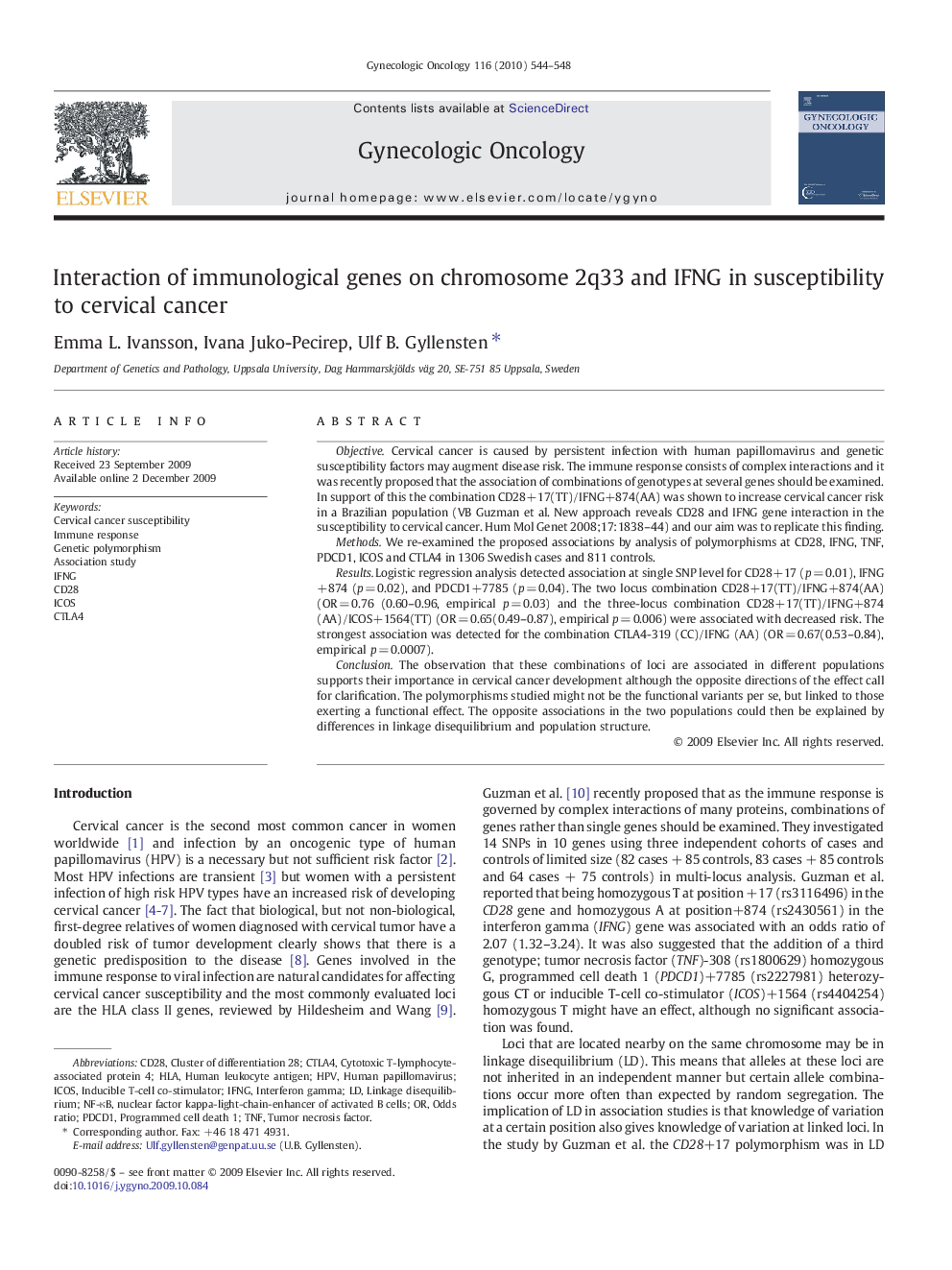| Article ID | Journal | Published Year | Pages | File Type |
|---|---|---|---|---|
| 3944197 | Gynecologic Oncology | 2010 | 5 Pages |
ObjectiveCervical cancer is caused by persistent infection with human papillomavirus and genetic susceptibility factors may augment disease risk. The immune response consists of complex interactions and it was recently proposed that the association of combinations of genotypes at several genes should be examined. In support of this the combination CD28+17(TT)/IFNG+874(AA) was shown to increase cervical cancer risk in a Brazilian population (VB Guzman et al. New approach reveals CD28 and IFNG gene interaction in the susceptibility to cervical cancer. Hum Mol Genet 2008;17:1838–44) and our aim was to replicate this finding.MethodsWe re-examined the proposed associations by analysis of polymorphisms at CD28, IFNG, TNF, PDCD1, ICOS and CTLA4 in 1306 Swedish cases and 811 controls.ResultsLogistic regression analysis detected association at single SNP level for CD28+17 (p = 0.01), IFNG+874 (p = 0.02), and PDCD1+7785 (p = 0.04). The two locus combination CD28+17(TT)/IFNG+874(AA) (OR = 0.76 (0.60–0.96, empirical p = 0.03) and the three-locus combination CD28+17(TT)/IFNG+874(AA)/ICOS+1564(TT) (OR = 0.65(0.49–0.87), empirical p = 0.006) were associated with decreased risk. The strongest association was detected for the combination CTLA4-319 (CC)/IFNG (AA) (OR = 0.67(0.53–0.84), empirical p = 0.0007).ConclusionThe observation that these combinations of loci are associated in different populations supports their importance in cervical cancer development although the opposite directions of the effect call for clarification. The polymorphisms studied might not be the functional variants per se, but linked to those exerting a functional effect. The opposite associations in the two populations could then be explained by differences in linkage disequilibrium and population structure.
